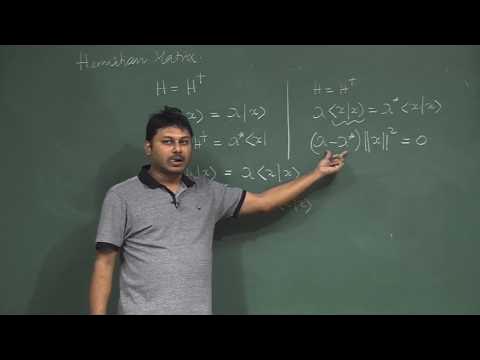Image Formation - II
Summary
TLDRThis video lecture explores essential concepts in digital image processing, focusing on transformations such as perspective and inverse perspective transformations. It discusses how 3D points are projected onto a 2D imaging plane and highlights the challenges posed by many-to-one mappings, where multiple 3D points can correspond to a single 2D image point. The lecture emphasizes the need for additional information, such as the z-coordinate, to uniquely identify 3D points from 2D projections, illustrating the complexities of imaging geometry in both aligned and generalized coordinate systems.
Takeaways
- 😀 Understanding digital image processing involves mastering transformations like translation, rotation, and scaling.
- 😀 Perspective transformation approximates the imaging process by mapping 3D points to a 2D image plane.
- 😀 The inverse perspective transformation aims to identify the original 3D coordinates from a point in the image plane.
- 😀 Homogeneous coordinates are crucial for performing transformations and simplifying calculations in 3D space.
- 😀 When the camera and world coordinate systems are misaligned, generalized imaging models must be employed.
- 😀 The focal length of the camera plays a significant role in determining the relationship between 3D and 2D coordinates.
- 😀 The inverse perspective transformation cannot provide unique 3D points due to many-to-one mappings.
- 😀 A free variable for the z-coordinate in the image plane helps describe the line of points corresponding to a single image point.
- 😀 Identifying the equation of the line through the camera optical center and the image point aids in understanding spatial relationships.
- 😀 To pinpoint a specific 3D point corresponding to an image point, additional information such as the z-coordinate is necessary.
Q & A
What are the basic transformations discussed in the lecture?
-The basic transformations covered include translation, rotation, and scaling in both two-dimensional and three-dimensional contexts.
What is the significance of the homogeneous coordinate system?
-The homogeneous coordinate system facilitates perspective transformations by allowing points in space to be represented in a way that simplifies mathematical operations and transformations.
What does a perspective transformation do?
-A perspective transformation maps a point or set of points from a three-dimensional space onto a two-dimensional imaging plane, simulating how a camera captures an image.
What is the purpose of the inverse perspective transformation?
-The inverse perspective transformation aims to determine the corresponding three-dimensional world point from a given two-dimensional image point.
How are the transformations related to camera and world coordinates?
-In the lecture, the assumption was initially made that the camera coordinate system aligns with the 3D world coordinate system. However, a generalized model considers cases where they may not be aligned.
What problem arises from the many-to-one mapping in perspective transformations?
-Due to the many-to-one mapping, multiple 3D points can correspond to the same 2D image point, making it impossible to determine a unique 3D point using the inverse transformation alone.
What information is needed to pinpoint a unique 3D point from a 2D image point?
-To accurately identify a unique 3D point, additional information such as the z-coordinate of the 3D point is necessary.
What is the relationship between the perspective transformation and the straight line in 3D space?
-The inverse perspective transformation can help define the equation of a straight line in 3D space, indicating that all points along that line map to the same 2D image point.
What is the role of the focal length in the transformations discussed?
-The focal length is crucial as it influences the mapping of the 3D points to the image plane, determining how objects appear based on their distance from the camera.
Why was the z-coordinate initially assumed to be zero in the homogenous coordinates?
-The z-coordinate was initially set to zero because the focus was on points lying on the imaging plane, but it is acknowledged that this assumption limits the accuracy of mapping to a unique 3D point.
Outlines

Этот раздел доступен только подписчикам платных тарифов. Пожалуйста, перейдите на платный тариф для доступа.
Перейти на платный тарифMindmap

Этот раздел доступен только подписчикам платных тарифов. Пожалуйста, перейдите на платный тариф для доступа.
Перейти на платный тарифKeywords

Этот раздел доступен только подписчикам платных тарифов. Пожалуйста, перейдите на платный тариф для доступа.
Перейти на платный тарифHighlights

Этот раздел доступен только подписчикам платных тарифов. Пожалуйста, перейдите на платный тариф для доступа.
Перейти на платный тарифTranscripts

Этот раздел доступен только подписчикам платных тарифов. Пожалуйста, перейдите на платный тариф для доступа.
Перейти на платный тариф5.0 / 5 (0 votes)






